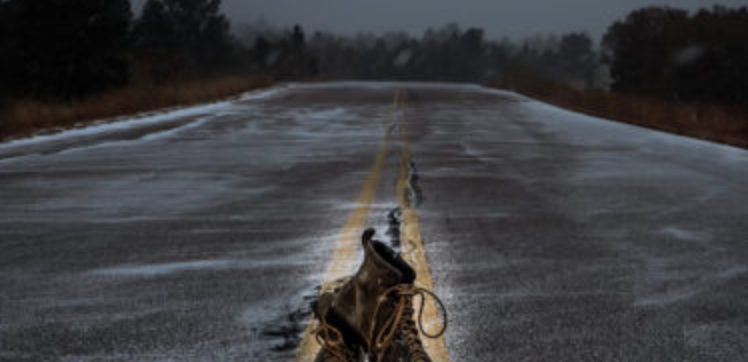We pull them on daily weighted with sentiment, one at a time; first over the toes, sliding past the arches, and finally tugging up and over the heel. We tightly knot the laces, tucking in the excess strings, fasten buckles, shine the scuffs off the toe cap, secure the straps; we worry over imperfections, firmly marry leather to ankle and blouse the bottom hem of each pant leg over the upper lip as our final measure to complete the ensemble and move forward with the duty ahead; the soldier’s boots.
They march headlong, rhythmically beating the ground with Russet’s measured tread, a procession in military manner that can parade for a dignitary or forge into battle. These same boots advanced through Europe to Pershing’s waiting trenches, headway into the icy mire seven feet deep and strident through a dash across no man’s land; the soldier’s boots. They hike onward, crossing the remote wilderness, through the dense woods of Boondocker’s treacherous trails, meeting the enemy’s front line. They traverse the skies, explore high and low country, stand at Eisenhower’s forested front, fighting through copse and thicket, trekking eastward; the soldier’s boots. They trudge ahead, shuffling through impenetrable jungle, murky bush, laboriously slog in Saran-wrapped feet down Ho Chi Minh’s path. These same boots stand athwart Westmoreland’s tangled tropics, slough the wilds of pointed traps and lethal snares; the soldier’s boots. They walk forward, springing step by tempered step across desert dunes in impenetrable heat, running to the filthy streets of Fallujah and Kabul. These brandless boots sped over the sandbanks of Schwarzkopf’s left hook, fought the stings of incoming fire and sandstorms; the soldier’s boots.
Black or brown leather, spit or Kiwi polish, rough side out with a mission application, stories and tales, boots on the ground, presence on a battlefield, new boot in the unit, pairs at a standing memorial, empty below the battlefield cross. Sole to sole, shoe to boot, the pathways of war.
Chris Barnes
Chris has served in the U.S. Air Force for 20 years, and is beginning the transition into a life beyond his service. He began writing as a means to treat his combat-related PTSD, and has since continued this passion of relaying his experiences through poetic form. He has published several poems and performed live at the Manhattan Salmagundi Club for a Veteran’s Art reception. Outside of writing, Chris spends his time creating memories with his wife and daughter.








